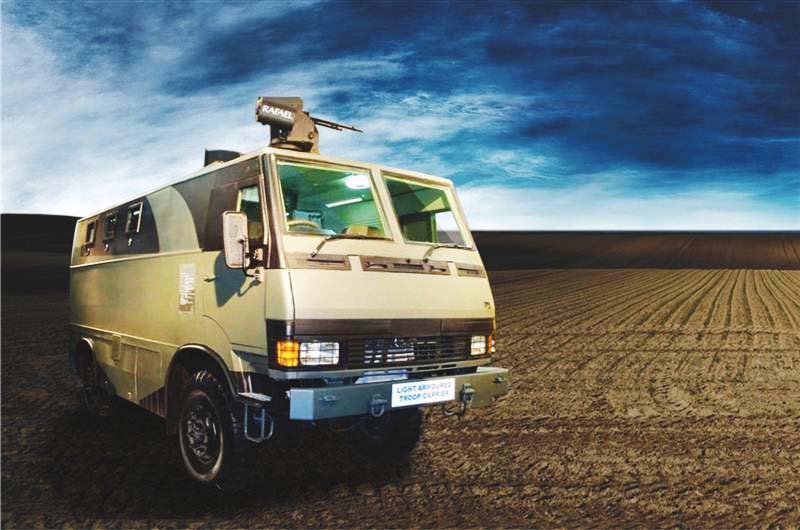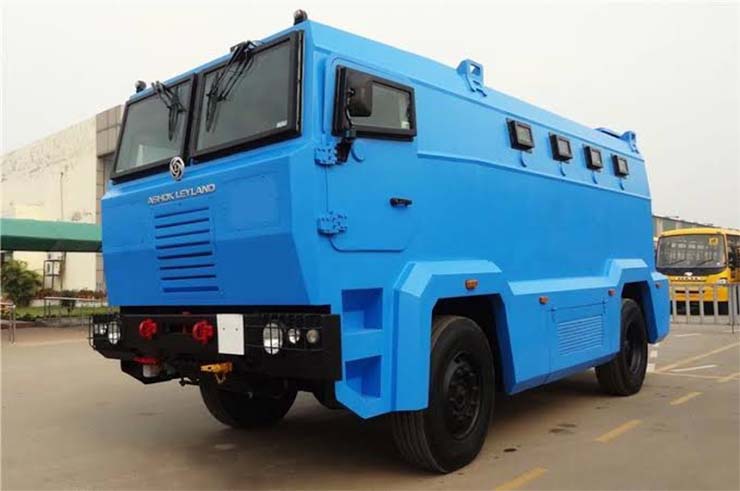
Strong and secure transportation solutions are integral part of the military milieu. Armoured vehicles go a long way in protecting personnel and equipment in hostile environments. Designed to safeguard individuals and assets in various challenging environments, they include luxury sedans, SUVs, military vehicles, personnel carriers, and cash-in-transit vehicles. Their formidable exteriors are born out of cutting-edge technology and innovative design principles, requiring a unique blend of expertise and relentless commitment to safety. Delving into the intricacies of armoured vehicle development unveils the remarkable science behind ensuring security and survivability on the battlefield.
The armouring process of a vehicle can usually be completed in less than a month, although more complex requirements with additional features and technologies may extend this timeframe. Preparation, armouring, and finalisation are three primary stages with rigorous inspections and testing at each stage to comply with stringent quality control.
Armouring involves integrating the vehicle’s frame, floor and roof with laser-cut ballistic steel to provide complete 360-degree protection. The wheels are equipped with run-flat systems, which allow the car to travel, even with deflated tyres
Understanding the Vehicle
During the initial preparation stage of an armoured vehicle, the engineering team utilises a 3D modelling system to design the components needed for the armouring of the specific vehicle model. While the required parts are being processed, a team of technicians disassembles the vehicle to its bare frame, inspects the original equipment manufacturer (OEM) parts, and methodically organises the parts ready for the armouring phase.

Incorporating Ballistic Protection
Armouring involves integrating the vehicle’s frame, floor and roof with laser-cut ballistic steel to provide complete 360-degree protection. The wheels are equipped with run-flat systems, which allow the car to travel, even with deflated tyres. The critical components, such as the gas tank, Engine Control Unit (ECU), and battery, are also armoured for extra protection, both under the hood and beneath the vehicle. The door seams of the car feature a proprietary overlap system that protects passengers from bullets that may enter through the seals. The suspension and braking system are meticulously reinforced to ensure that the car can handle the added weight of the ballistic armour and bulletproof glass.
After the armouring process, the vehicle’s interior is reassembled and refitted into the fortified car. The finished vehicle closely matches the original inside and outside version to ensure that the armouring is discreet
Enhancing Survivability through Mobility
Every care is taken to ensure that the ballistic protection does not affect the mobility of an armoured vehicle. Mobility is essential for manoeuvring across challenging terrain and enhancing survivability by reducing the vehicle’s vulnerability to enemy attacks. Engineers utilise innovative suspension systems, powerful drivetrains, and advanced propulsion technologies to optimise mobility without compromising protection, striking a delicate balance between agility and armour.
Integrating Active Protection Systems
After the armouring process, the vehicle’s interior is reassembled and refitted into the fortified car. The finished vehicle closely matches the original inside and outside version to ensure that the armouring is discreet. All desirable protective technologies, such as smokescreen devices, sirens, spotlights, dual-door locking systems, and other security features, are installed during this stage.

Human-Centric Design
Beyond technological advancements, the human factor remains central to the design philosophy of armoured vehicles. Ensuring crew comfort, situational awareness, and operational efficiency are important elements of vehicle ergonomics. From intuitive control interfaces to ergonomic seating arrangements, designers prioritise the well-being and effective working of personnel operating within the vehicle, thereby fostering a symbiotic relationship between man and machine.
Takeaways
The science behind designing armoured vehicles combines various disciplines, such as material, design, engineering, and technology. It involves the careful selection of materials, meticulous design considerations for protection and mobility, and the integration of advanced technologies. The science and technology behind armoured vehicles continues to evolve, ensuring the highest level of protection for their occupants. The future of armoured vehicles promises even more innovative and effective solutions as stakeholders continue to push the boundaries in a relentless pursuit of safety, security and effectiveness in an increasingly challenging world.
–The writer is Chief Executive Officer, JCBL Armouring Solutions, A JCBL Group Company















